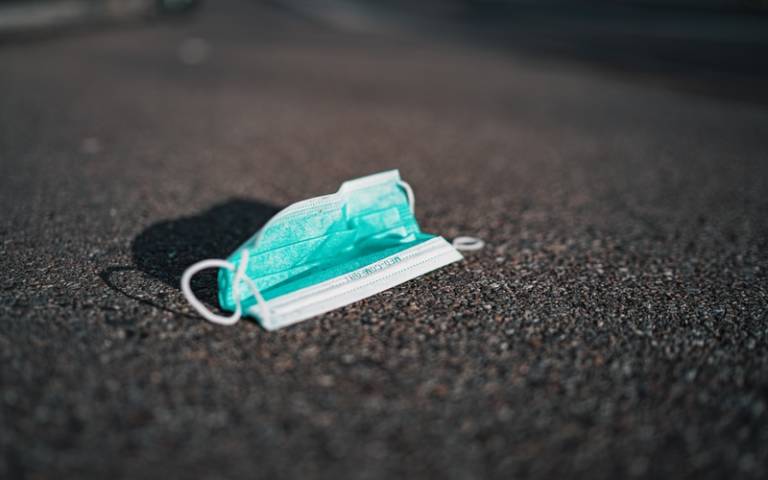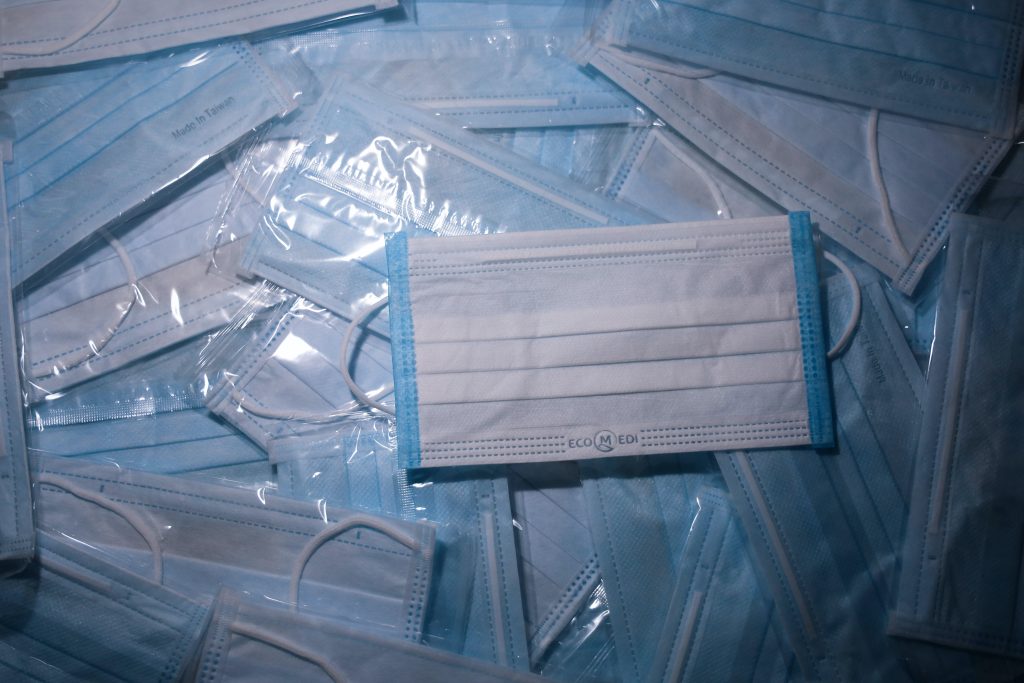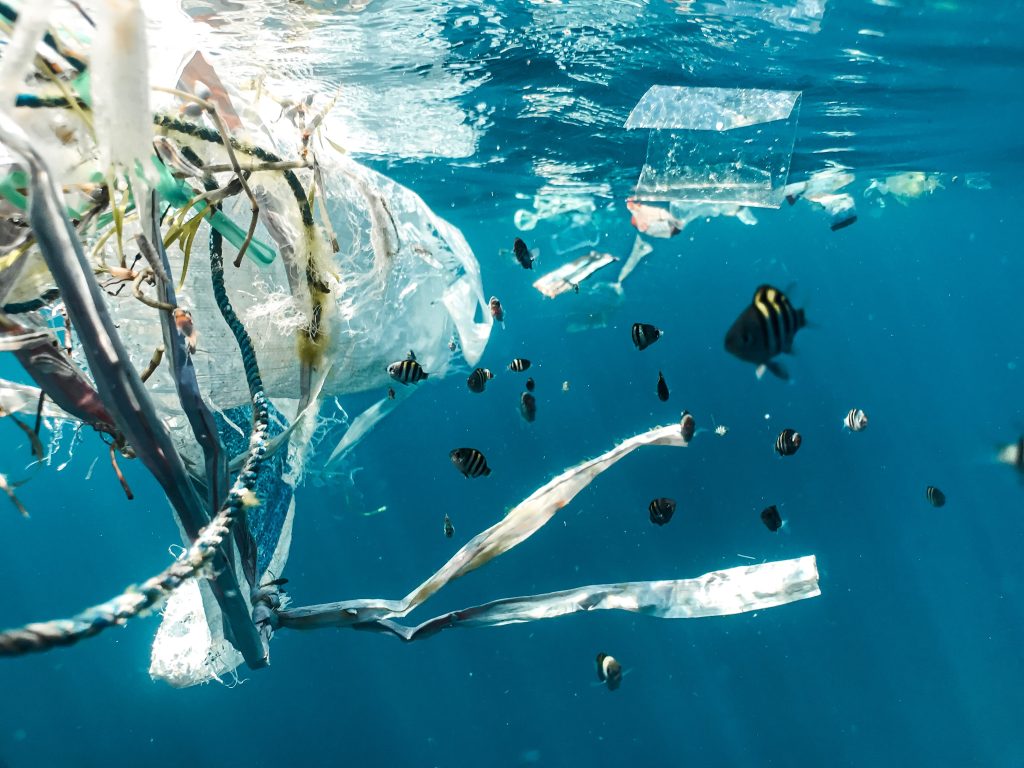Protective masks have become a fashion trend during the Covid-19 pandemic, but what is their impact on the Earth?
The Covid-19 pandemic generates up to 10,000 tonnes of extra medical waste a day. Most of which are disposable face masks. Unfortunately, the production, use, and disposal of masks is unlikely to return to pre-pandemic levels for quite some time.

This article looks at how protective face masks have become an enormous problem for waste disposal and how we must manage our use of them to protect the environment from serious damage.
Protective Masks and Plastic Production
Plastic production has risen exponentially in the last decades and now amounts to 400 million tons per year. If we keep going at this rate, this will double by 2040.
In March 2022, the United Nations Environmental Assembly (UNEA-5) endorsed a landmark agreement to End Plastic Pollution and forge an international legally binding agreement by 2024. The resolution addresses the full lifecycle of plastic, including its production, design, and disposal.
Heads of State, Environment Ministers, and other representatives from 175 countries voted to make this resolution. This is debatably the most important decision since the Paris Agreement.
Various products use plastic, ranging from:
- bicycle helmets
- child safety seats
- car airbags
- cell phones
- televisions
- and computers

However, their non-biodegradable nature is catastrophic for the environment. Discarded plastics make their way to the ocean or landfills. They then break down into smaller pieces which in turn releases toxic chemicals. Exposure to heat and sunlight further causes these plastics to break down into methane and ethylene (greenhouse gases).
Microfibres in Protective Masks
Disposable masks are plastic products. These cannot biodegrade readily but may fragment into smaller plastic particles. More specifically, micro and nanoplastics that are now widespread in our ecosystems.
Recent studies estimate that we use an astounding 129 billion protective masks globally every month. That’s 3 million a minute. Most of these masks are disposable face masks and are made from plastic microfibres.
The enormous production of disposable masks is on a similar scale as plastic bottles. This is approximately 43 billion per month.
However, unlike plastic bottles, there is no official guidance on recycling protective masks. Thus, they dispose as solid waste.
What do Micro Plastics do to the Environment?
Plastics from disposable masks end up in freshwater systems, and oceans, where they break down into large numbers of micro-sized particles (smaller than 5 mm) in a matter of weeks, Over time they further fragment into nanoplastics (smaller than 0.1 micrometers).
“A newer and bigger concern is that the masks are directly made from microsized plastic fibres (thickness of ~1 to 10 micrometers). When breaking down in the environment, the mask may release more micro-sized plastics, easier and faster than bulk plastics like plastic bags.”
– Science Daily
Initially, discarded masks may risk spreading coronavirus to waste collectors. We know that in certain conditions, the virus can survive on a plastic surgical mask for days.
Plastic waste smothers environments and damage ecosystems. Some animals choke on pieces of litter because they mistake it for prey. Others become malnourished as the materials fill up their stomachs but provides no nutrients.
Animals also become entangled in the elastic of masks or other safety products like plastic gloves.

Finally, when the materials break down into nanoplastics, they start to accumulate in the food chain. Experts estimate the average human effectively consumes about a credit card sized amount of plastic each year.
Just one protective mask can produce millions of nanoparticles, each with the potential to carry chemicals and bacteria up the food chain.
How Good are Reusable Cloth Masks?
People often think that reusable cloth masks are more sustainable than plastic masks. Reusable cloth masks are made using raw materials and are often reused.
However, it is not as effective in filtering out particles and can easily absorb water.
Furthermore, the disposable filters used in many cloth masks are worse for the environment than regular surgical masks.
Disposable filters increase the environmental impact. This is because the small filters are often made from plastic similar to the disposable masks. This also entails a filter that is discarded after every use.

Surprisingly, experts say that hand washing reusable masks with disposable filters had the highest environmental impact overall – higher even than using fully disposable masks. While washing machines use electricity and water, modern standards minimise this usage. Meanwhile, manual washing uses a lot of water and detergent.
8 Ways to Use Protective Masks Sustainably
Whilst protective masks remain essential in certain settings, there are some key takeaways to limit their damage.
- Use reusable masks without disposable filters. Machine wash them regularly following the instructions for the fabric.
- Try to carry a spare so, if something goes wrong with the one you’re wearing, you don’t need to use or buy a disposable mask.
- Set up mask-only bins for collection and disposal.
- Consider standardisation and strict guidelines for mask wastes.
- If you do need to use a disposable mask, take it home (maybe in a bag if you have to take it off) and put it straight into a bin with a lid. If this isn’t possible, place it in a proper public bin.
- Don’t put disposable masks in the recycling. They are a potential biohazard to waste workers when masks get caught in specialist recycling equipment.
- Consider the development of biodegradable disposal masks.
- Whatever you do, don’t litter!
Conclusion
Cotton masks reduce plastic production as they have no disposable filters. Whilst this is not suitable for medical or hospital settings, in many places this is appropriate to reduce the spread of virus and other particles.
However, we can also investigate other, non-mask related solutions to the problem like improving airflow or introducing air filters in closed spaces.
Many schools are making use of the open air when weather permits, as well as installing highly effective air purifiers like HEPA filters. These are great for filtering out all sorts of airborne particles, including dust, pollen, and other airborne particles.
THRIVE is a for impact, not-for-profit organisation dedicated to Research, Education and Advocacy in support of the UN’s Sustainable Development Goals. We help individuals and organisations make sustainability commitments and improve their understanding of the global crisis. If you’d like to find out more or help THRIVE by donating, visit our support page here.























